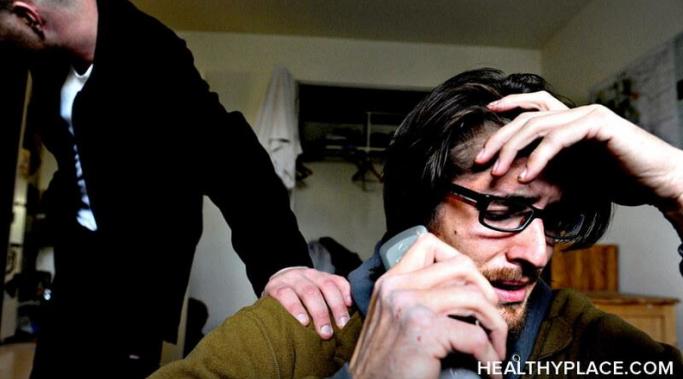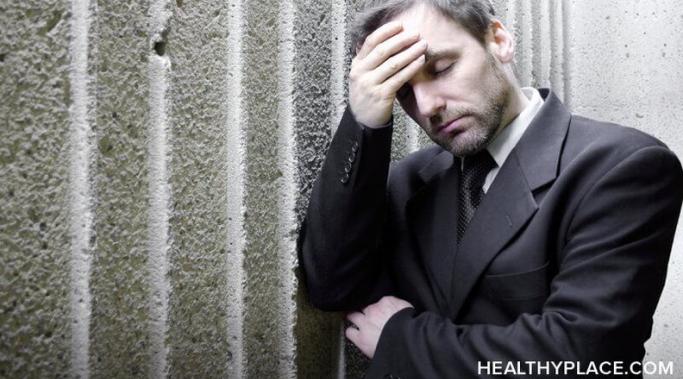A
Trauma! A PTSD Blog
Reducing the stigma of posttraumatic stress disorder (PTSD) is something that we all can, and should, help in doing. If you are reading this post, then it's probably because you, or someone close to you, suffers from PTSD or some other type of mental illness. Those of us who are familiar with PTSD are, undoubtedly, also familiar with the stigma and discrimination that comes along with it. The good news is, there are things that we all can do to help reduce the stigmatization of PTSD sufferers.
Learning to increase my resiliency when dealing with posttraumatic stress disorder (PTSD) symptoms and everyday stress has been essential in my PTSD recovery. While I thought that resiliency was something that would just naturally follow working an active wellness treatment plan, I have found that resiliency is actually something that can be built and strengthened during recovery, and it can be done by learning to be proactive in a few simple areas when triggered or stressed. As I have increased my resiliency, my PTSD symptoms have lessened and my stress and anxiety have decreased, making everyday life much more enjoyable.
I have found that there are some really good reasons that we should not compare our posttraumatic stress disorder (PTSD) recovery to the recovery of others. It's easy to get caught up in the comparison of your recovery process to the processes of others. After all, you are going through the same types of struggles and are dealing with the same types of symptoms (PTSD Symptoms and Signs of PTSD). Not to mention we often find a lot of similarities that allow us to relate to one another, and that is beneficial -- it lessens the feeling that we are alone. However, while that type of peer support is helpful to us, comparing our progressions in PTSD recovery is not.
I've learned about the benefits of practicing self-compassion in PTSD recovery. In my last post I talked a little bit about using self-compassion as one way of dealing with posttraumatic stress disorder (PTSD) and the shame that is associated with trauma. In this post, I want to dig deeper into how to be kind to ourselves and cultivate a practice of self-compassion to alleviate some of the symptoms of PTSD. Being kind to myself is something that I know I need to do more of, but it isn't something that comes naturally to me, and I suspect that is true for many trauma survivors. When I am able to practice self-compassion in PTSD recovery, I find that dealing with PTSD symptoms is easier and my negative self-talk and feelings are lessened.
We all need to heal the shame associated with trauma and posttraumatic stress disorder. Trauma survivors and those of us with posttraumatic stress disorder (PTSD) often have a heavy feeling of shame attached to our trauma. Shame related to trauma is especially common in survivors of domestic violence, physical and sexual abuse, and rape. I have experienced shame related to the trauma that led to my PTSD, and it has been difficult to make sense of. It is something that I continue to work on in my PTSD recovery even now. Fortunately, there are some effective ways to deal with the shame that accompanies trauma and PTSD.
There are various types of treatment for posttraumatic stress disorder (PTSD), and they don't all work the same for everyone. A specific treatment may work for one person, and not another. Using a 12 step approach for PTSD, along with other traditional methods of treatment, has been helpful to me in my recovery, and it could be helpful for you. Previously, I've covered the first nine steps, and this post will explain the last three steps of the 12 step approach for PTSD recovery.
Using a 12 step program for posttraumatic stress disorder (PTSD) recovery, in addition to traditional PTSD treatments, has been helpful to my recovery. Adapting the steps to trauma-related PTSD is easy and the benefits that I have gotten from working the steps has lessened my PTSD symptoms and improved my life. While 12 step programs are generally only thought of as useful in treating alcoholism and addiction, I have found that using a 12 step approach for PTSD recovery is favorable in other situations as well. In previous posts, I have covered the first three steps and steps four, five, and six. This post focuses on steps seven, eight and nine of the 12 step approach to PTSD recovery.
Applying the 12 step approach to posttraumatic stress disorder (PTSD) recovery is just one way that I have found to strengthen my PTSD recovery and improve my life. Because the steps that are commonly used for addiction recovery are all about learning to live life in a new way, they can successfully be applied to many things other than drug addiction and alcoholism. I've used the 12 steps for my alcoholism, codependency, and PTSD, and I have found that if you are open-minded and willing, they really do work. I wrote about applying the steps 1 -3 last time, so here are steps four, five, and six to help you apply the 12 steps to PTSD recovery.
Applying the 12 step approach is one way to enhance posttraumatic stress disorder (PTSD) recovery. Because many of us who suffer from PTSD have also suffered from drug or alcohol addiction, I think applying the 12 steps to our PTSD recovery only makes sense. If we are finding relief from our addiction by using the 12 steps, which teaches us a new way to live, then we can apply that new way of living to our PTSD recovery as well. Even for PTSD sufferers who don't have a problem with drugs or alcohol, I believe the 12 step approach can be helpful.









